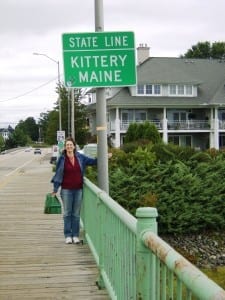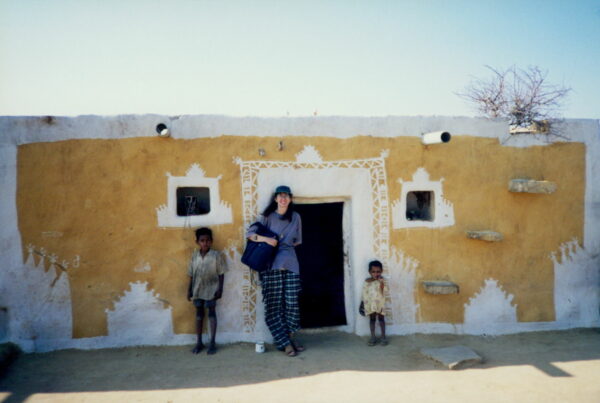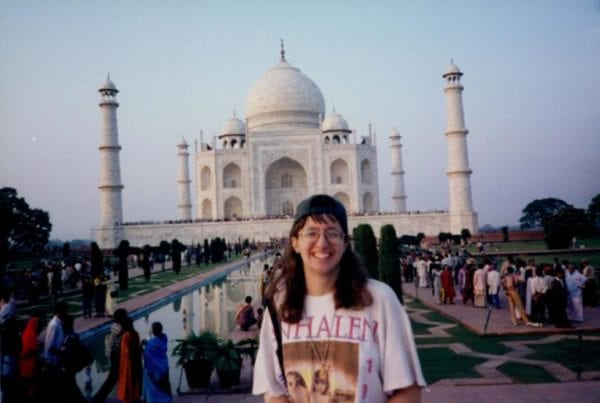 On a recent trip to see my step-sister Johanna we decided to walk to Maine. Yes, you heard right. We walked to Maine. Don’t get too impressed yet, though. Let me start at the beginning.
On a recent trip to see my step-sister Johanna we decided to walk to Maine. Yes, you heard right. We walked to Maine. Don’t get too impressed yet, though. Let me start at the beginning.
In my world of building U.S. or Europe/India teams a lot of talk buzzes around about globalization. In the minds of many of my clients, globalization is about the dissolution of borders through technology. Nowadays teams can talk to each other through Cisco Telepresence, a room specially designed on each end so that people look life-sized to each other. The sound is amazing too, with almost no delay when each person speaks. I did a training this way once and I relished the ability to see multiple people sitting “across the room” from me.
We have Sharepoint, LinkedIn, Facebook, iPhones, iPads, and a million ways to transform information. Does this mean that borders are becoming less significant? I say “no way.”
If you are a frequent traveler you may disagree with me. As a Westerner you might feel that the specific brand of modernization taking place in India or China makes travel more standard, with malls in every city and a McDonald’s on every corner. While on the surface that is true, I believe that in deeper ways borders are as strong if not stronger than before the grand sweep of globalization began. So yes, Thomas Friedman, I am saying the world is not flat. It is more connective, with faster information flow and more ways to do business, but it is not flat.
For evidence, all I have to do is travel within my home country, the United States. On this most recent trip to visit Johanna I returned to my birthplace. I was born in Worcester, Massachusetts and moved to Los Angeles when I was two years old. When I arrived we decided to go for a drive to Portsmouth, New Hampshire and the surrounding beaches. I marveled at the hauntingly beautiful coast line and wind battered cottages, and enjoyed lunch in Portsmouth.
Then Johanna said something I will never forget.
“See that bridge? That goes to Maine. You can even walk across.”
“What?” I cried out, “You can walk to Maine? Well what are we standing here for?”
We headed for the bridge and walked across. I honestly did not expect to feel anything different when we reached the state line. Yet, Maine was different. Very different. I could feel it as soon as we got across the bridge. Things were quieter, more sparse, and just more Maine. I can hardly explain it.
Then I saw this:
A vending machine with frozen bait. I asked Johanna if she’d ever seen these in New Hampshire. She looked at me as if I had sprouted an additional head.
After our visit to Maine we crossed back into New Hampshire, then over to Massachusetts, then New Hampshire again.I could feel the subtle differences in my gut and see some of them with my eyes. Similarly, when you fly from a city like Bangalore, India to Hyderabad, a forty-five minute flight, you fly to another world with a different language. I could give dozens of other examples.
Borders still matter, and from a business perspective that warrants attention. Though nations do have shared values, people are often proud of their neighborhood, their region, their home. They may also perceive globalization as a threat to their cultural identity and therefore firmly hold on to that which separates them from the rest of the world.
Let us be conscious when working across borders that culture still plays a more vital role than may be visible, and let us bring that awareness to our processes, procedures, leadership competencies, service, and products.
I welcome your comments and especially your adulation for my arduous walk to Maine!
See you next time.






Maine is my kind of place. It is never too early to go fishing and you don’t have to wait for the bait shop to open. There’s a vending machine with frozen bait.
I figured you would love it! The town of Kittery had such a great feel, very quiet. Of course I only walked in about 20 feet, but it was a change I could definitely sense. I think it’s time for a trip, Peter!
Nice story, Vicki!
Rita
Thanks, Rita! It was an adventure, to be sure.